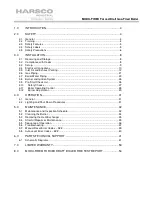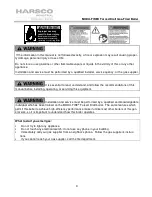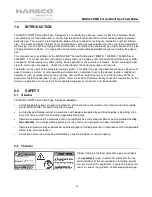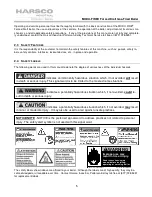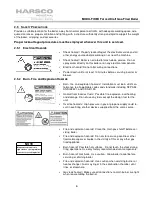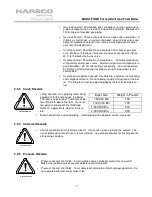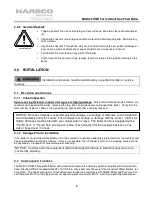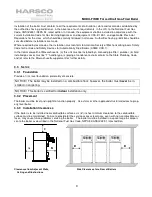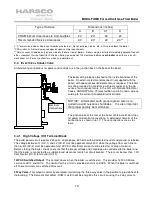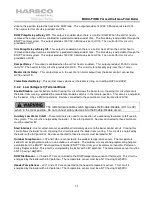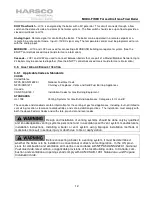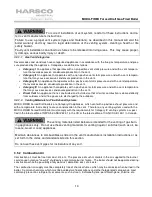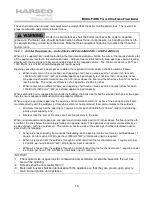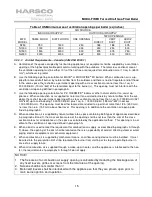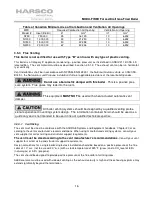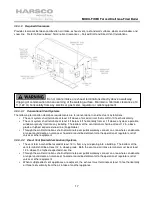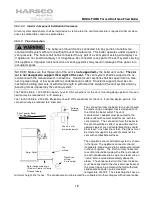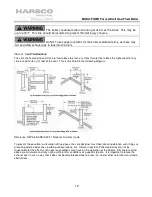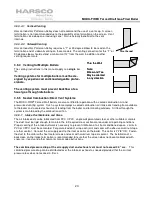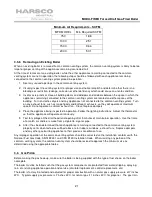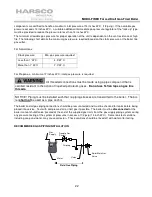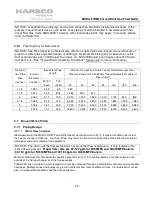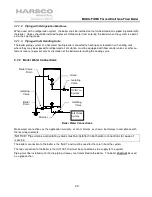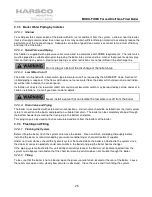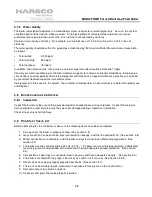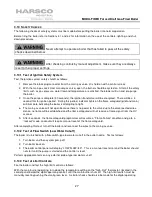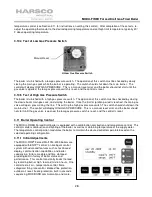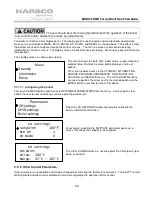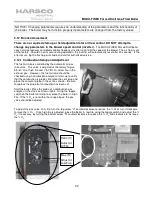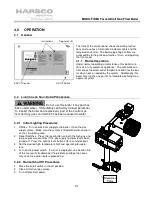
MODU-FIRE® Forced Draft Gas-Fired Boiler
16
Table of Canadian Minimum Area of Combustion and Ventilation Air Openings
MFD
Required Combustion Air Opening
Ventilation Air Opening
Model #
Input (Btu/Hr)
in
2
mm
2
in
2
mm
2
N750
750,000
25
16,129
10
6,452
N1000
1,000,000
33
21,290
10
6,452
N1500
1,500,000
50
32,258
10
6,452
N2000
2,000,000
67
43,226
10
6,452
3.5.3 Flue Venting
This boiler is not certified for use with Type "B" vent nor with any type of plastic venting.
This boiler is a Category IV appliance (condensing – positive pressure) as it is defined in ANSI Z21.13/CSA 4.9,
latest edition. The vent material must be as described in section 3.5.1.2. The exhaust vent can be run horizontal-
ly or vertically.
Vent installations shall be in accordance with NFPA54/ANSI Z223.1, the
National Fuel Gas Code
, or CAN/CSA-
B149.1, the
Natural Gas and Propane Installation Code
, or applicable provisions of the local building codes.
Do not use a barometric damper with this boiler. This is a positive pres-
sure system. Flue gases may leak into the room.
This equipment MUST NOT be used with a heat actuated automatic vent
damper.
All boiler venting systems should be designed by a qualified venting profes-
sional experienced in venting system design. The information contained herein should be used as a
guide only and is not intended to be used in lieu of qualified technical expertise.
3.5.3.1 Vent Sizing
The vent must be sized in accordance with the ASHRAE Systems and Equipment handbook, Chapter 30 or ac-
cording to the vent manufacturer’s recommendations. When using manufactured venting systems, consult your
vent supplier for correct sizing and structural support requirements.
The vent must be sized according to the vent manufacturer’s recommendations.
Consult your vent
supplier for correct sizing and structural support requirements.
Design calculations for a single boiler/single stack installation should be based on a positive pressure at the flue
collar of 1.0” w.c. (not to exceed 2.0” w.c.) with a stack temperature of 325° F (gross) and a CO
2
level of 8.5%
(natural gas) or 9.9% (propane).
The vent should be designed to provide positive pressure at the flue collar at all firing rates.
Additional care must be used with sidewall venting as the exhaust velocity is high and the exhaust gas plume may
extend significantly beyond the termination.

